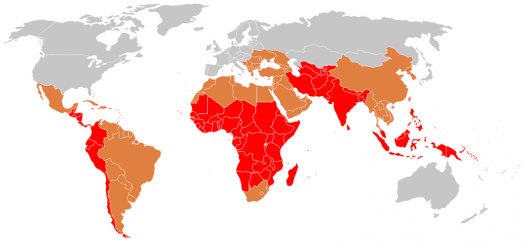One of the most daunting challenges in clinical medicine is finding the cause of an acute febrile illness. The implications are significant. Some acute febrile infections are life-threatening, like meningitis or cerebral malaria, causing death within hours. Some are highly contagious; putting loved ones – family and friends – at greatest risk. And some can be treated quite successfully, especially if a prompt, correct diagnosis made. Managing an acute febrile illness is difficult by nature, and the challenges are multiplied many-fold in settings without up-to-date laboratory, imaging, or therapeutic resources.
A useful first step in diagnosing an acute febrile illness is to understand the local epidemiology. The image above illustrates the distribution of typhoid fever. In the particular geographic region, time of year, age and sex of the patient in question, what infectious diseases most commonly cause febrile illness? If the setting is the United States, in January, in a young and unvaccinated person, then influenza may be a likely culprit. In China, in the rainy season (roughly May-September), Japanese encephalitis is a frequent threat. In Central America, also May-September and particularly among people with previous similar illness, dengue fever must be considered.
An understanding the local epidemiology gives astute clinicians the ability to assign probabilities to the etiologies being considered: to add some and to eliminate others. This forms the basis of a rationale that will lead to the next steps in the search for clues to the precise cause of fever.

